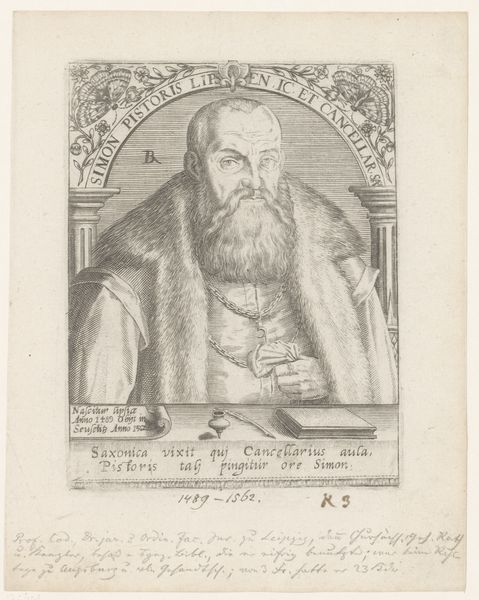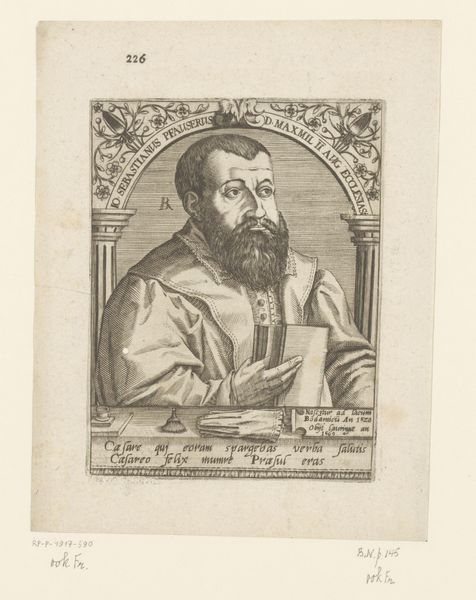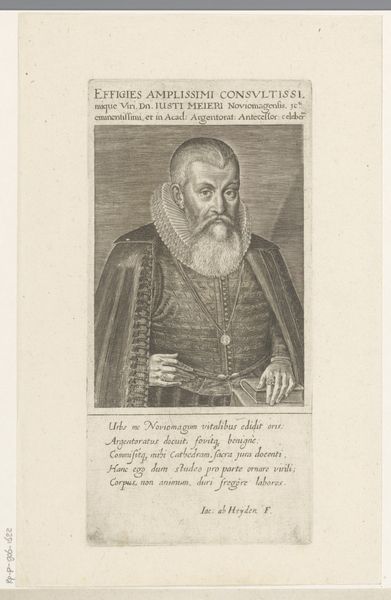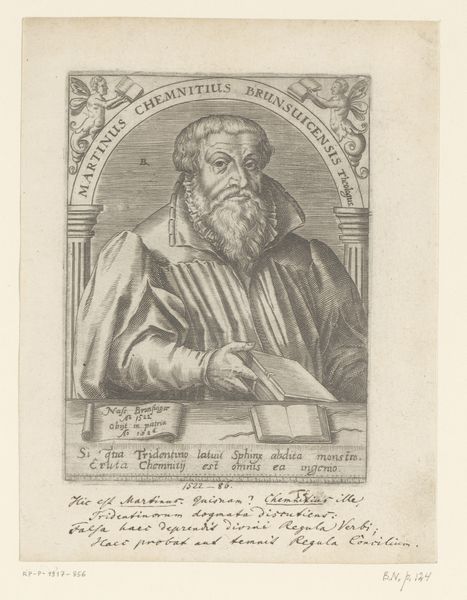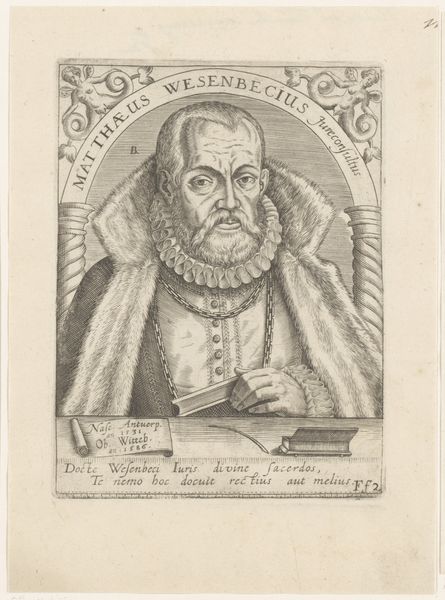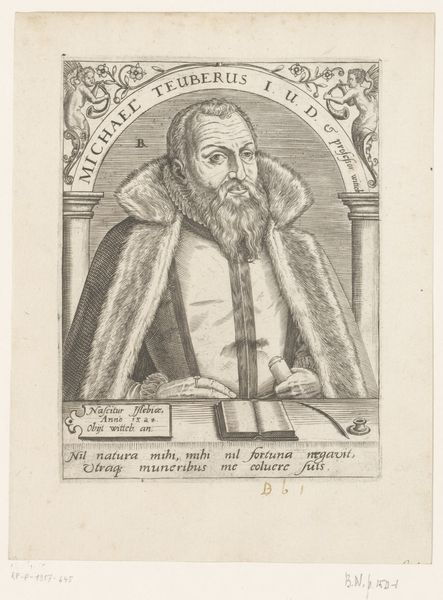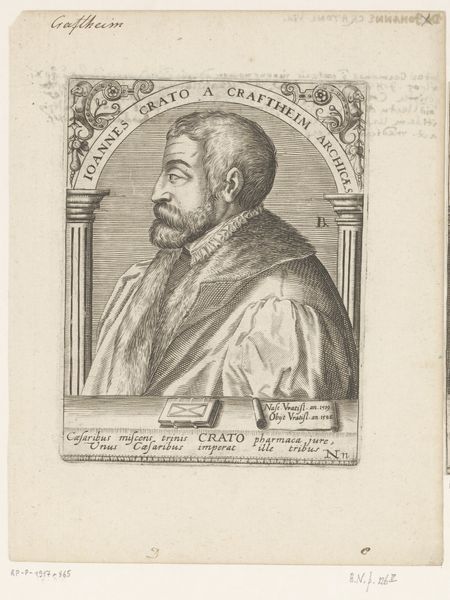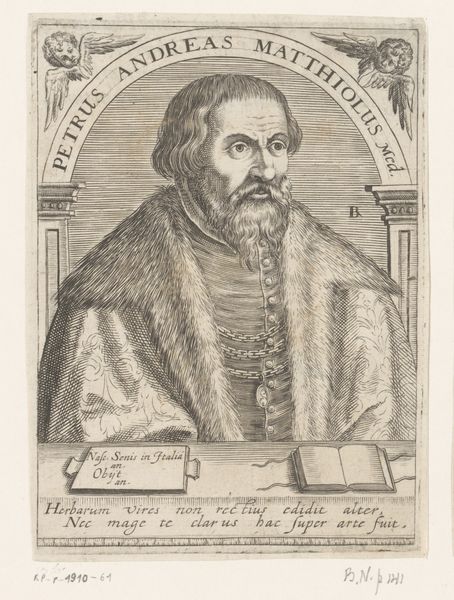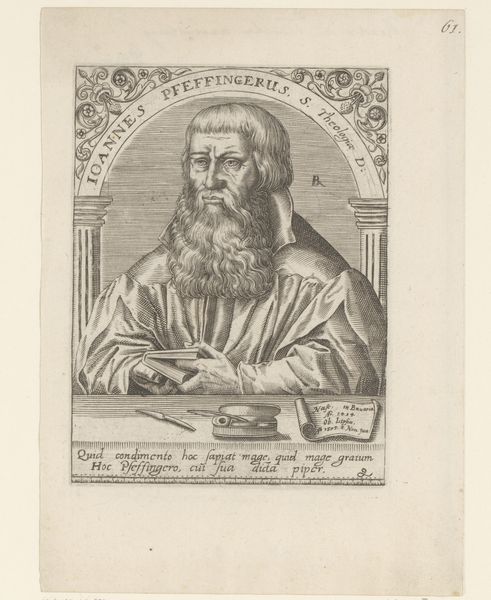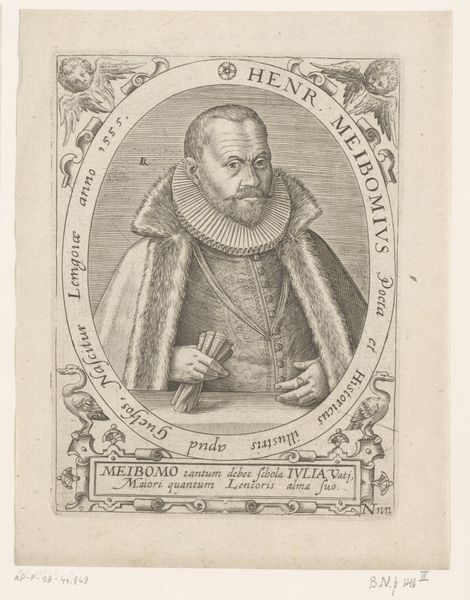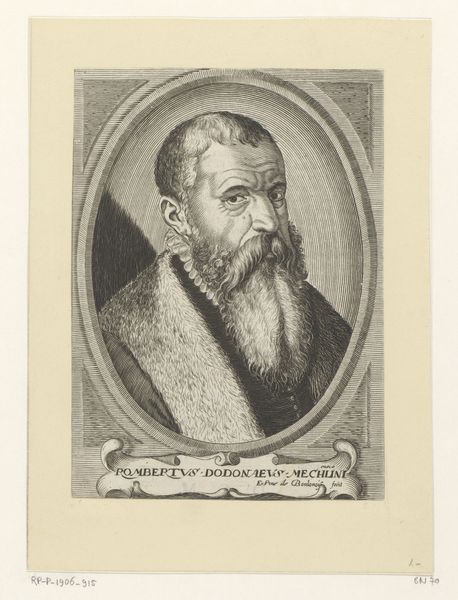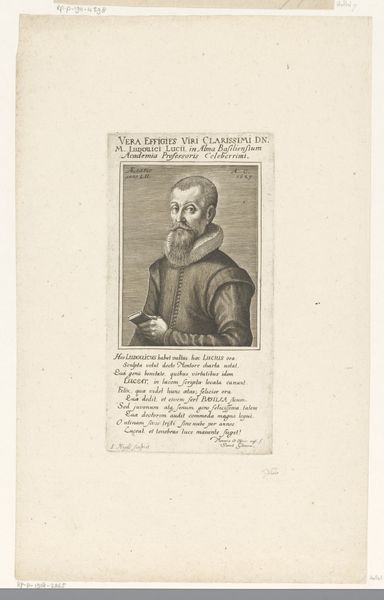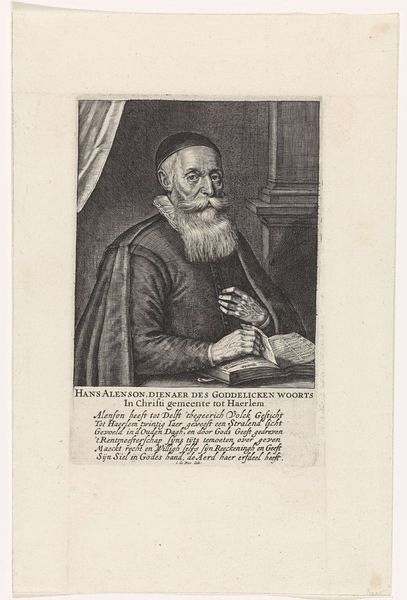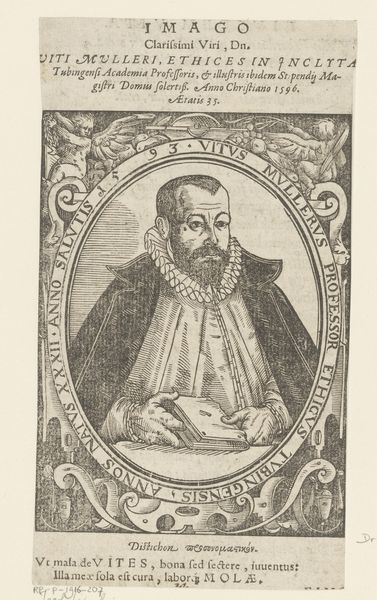
engraving
#
portrait
#
medieval
#
11_renaissance
#
engraving
Dimensions: height 142 mm, width 108 mm
Copyright: Rijks Museum: Open Domain
Robert Boissard's portrait of Johann Schneidewein was made with engraving in the Netherlands, sometime between 1586 and 1691. The portrait depicts a man of importance, a 'jurisconsultus', as the inscription tells us. Engraved portraits like this one served important social functions at the time, preserving the likenesses of important people while also broadcasting social status. Note the fur coat, the fine embroidery, and the imposing book; all of these are visual cues that indicated the social standing of the sitter. The classical architectural motifs, framing the man's face, also emphasize his elevated standing. But why make a print, rather than a painting? The answer is that printmaking was a new technology, and so more efficient at producing images. So it was better suited to the needs of institutions like universities, as well as to private citizens who wanted to share their image widely. To understand this artwork better, we can do further research on the history of Dutch printmaking, and on the fashion and status symbols that it incorporates.
Comments
No comments
Be the first to comment and join the conversation on the ultimate creative platform.
